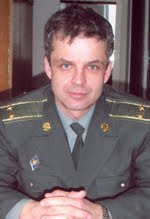Aug 12, 2012 (Radio Free Europe). Russia is marking the 100th anniversary
of its air force with an aviation parade and parachute drop at the
Zhukovsky airfield outside of Moscow. Lieutenant General Viktor Bondarev opened the celebrations and noted
that 69 foreign countries had sent delegations to the event.
Russian President Vladimir Putin issued a statement saying that "the
development of military aviation is the priority of the country's
military policy."
He promised on August 11 that the air force will receive over 600 new
combat planes and 1,000 helicopters by 2020 as part of a $720 billion
military-reequipment effort.
Monday, August 13, 2012
Posted by Oleg Bezverkhnii at 09:32 0 comments
Labels: Air Force, Aviation, President Putin, Russia, Russian Army, Zhukovsky
Thursday, August 2, 2012
The "Swedish stone" in the heart of Saxony
Dear readers,
Not long ago I visited Lützen, a very interesting place in
Saxony that is closely connected with the history of Sweden and the Thirty Year’s War (1618–1648). It
attracts many Swedish visitors who come here to see a monument and the “Swedish stone” located
on the spot where their famous King Conqueror Gustavus Adolphus was killed on 16 November
(N.S.), 1632, in the Battle of Lützen. This battle, which was one of the most decisive battles of the
war, was fought between the army of the Holy Roman Emperor Ferdinand II, headed by the Roman
Catholic General Albrecht Wenzel Eusebius von Wallenstein and the Protestant army, led by the Swedish
king Gustavus Adolphus. Gustavus Adolphus was killed when, at a crucial point in the battle,
he became separated from his troops while leading a cavalry charge into a dense smog of mist and
gunpowder smoke. After his death, his wife kept his body, and later his heart, for over a year in the
castle of Nyköping. His remains (including his heart) now rest in Riddarholmskyrkan in Stockholm. In
February 1633, following the death of the king, the Swedish Riksdag of the Estates decided that
his name would from this time forth be Gustav Adolf the Great. No such honor has been bestowed on
any other Swedish monarch before or since. At the spot where Gustavus Adolphus fell, a granite
boulder was placed on the day after the battle. A canopy of cast iron was erected over this “Swedish
stone” in 1832, and a chapel, built by design of Swedish architect Prof. Lars Wahlmann, near the site, was dedicated on 6 November 1907.
Posted by Oleg Bezverkhnii at 09:40 0 comments
Labels: Albrecht Wenzel Eusebius von Wallenstein, Battle of Lützen, Gustavus Adolphus of Sweden, Swedish stone, Thirty Year’s War
Subscribe to:
Posts (Atom)



